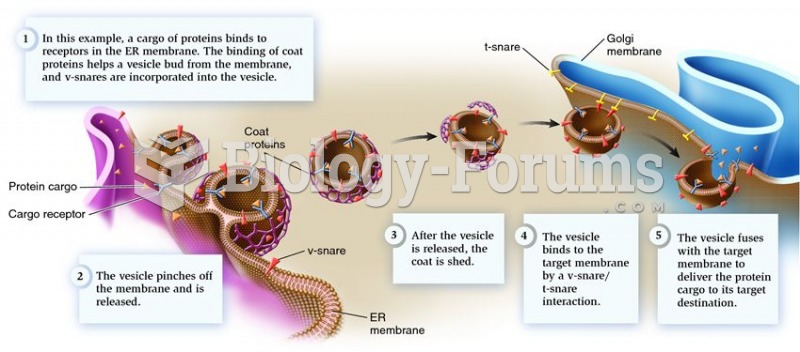|
|
|
Drug-induced pharmacodynamic effects manifested in older adults include drug-induced renal toxicity, which can be a major factor when these adults are experiencing other kidney problems.
The toxic levels for lithium carbonate are close to the therapeutic levels. Signs of toxicity include fine hand tremor, polyuria, mild thirst, nausea, general discomfort, diarrhea, vomiting, drowsiness, muscular weakness, lack of coordination, ataxia, giddiness, tinnitus, and blurred vision.
The highest suicide rate in the United States is among people ages 65 years and older. Almost 15% of people in this age group commit suicide every year.
Calcitonin is a naturally occurring hormone. In women who are at least 5 years beyond menopause, it slows bone loss and increases spinal bone density.
Earwax has antimicrobial properties that reduce the viability of bacteria and fungus in the human ear.
 Second step in cotranslational protein localization: vesicle transport from the endoplasmic reticulu
Second step in cotranslational protein localization: vesicle transport from the endoplasmic reticulu
 The end of a typical line wrench, which shows that it is capable of grasping most of the head of ...
The end of a typical line wrench, which shows that it is capable of grasping most of the head of ...
 The line that has the yellow tag is a highpressure line and this line must be replaced with a new ...
The line that has the yellow tag is a highpressure line and this line must be replaced with a new ...




